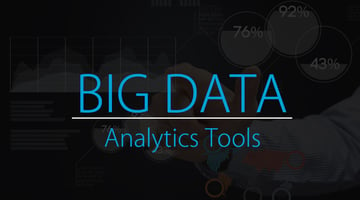In the realm of Big Data analytics, selecting the right tools is akin to navigating a vast galaxy...
Top 5 Edge Computing Technologies for Faster Processing
In the fast-paced world of technology, edge computing is rapidly becoming a cornerstone for enhancing processing speeds and reducing latency. This is especially true as we dive deeper into the era of IoT and 5G, where the need for quick data processing is more critical than ever. If you're looking to stay ahead of the curve, here are the top 5 edge computing technologies that promise to revolutionize the way we process data, making our digital interactions faster and more efficient.
1. Amazon AWS
Amazon Web Services (AWS) offers a comprehensive edge computing solution that extends AWS to devices and locations outside traditional data centers. With AWS, you can run applications closer to end-users to reduce latency, improve data processing speeds, and enhance user experiences. Their services include AWS Lambda@Edge, Amazon CloudFront, and AWS Outposts, catering to a wide range of edge computing needs.
2. Microsoft Azure Edge Zones
Microsoft Azure Edge Zones bring Azure services to the edge, combining the power of Azure, 5G networks, and carrier infrastructure to deliver seamless experiences to end-users. Azure Edge Zones support a variety of applications, from augmented reality and virtual reality to IoT and media content optimization, ensuring low-latency and high-bandwidth capabilities.
3. Google Cloud IoT Edge
Google Cloud IoT Edge extends Google Cloud's powerful data processing and machine learning to the edge, enabling smarter and faster decision-making in IoT devices. It leverages Google's advanced AI and machine learning models to analyze and act on data in real-time, directly on devices, without the need to send data back to the cloud.
4. IBM Watson IoT Edge
IBM Watson IoT Edge brings the power of IBM's Watson AI to the edge, allowing businesses to harness real-time insights from their IoT devices. This platform enables efficient data analysis and processing at the edge, reducing the need for data transmission and speeding up response times for IoT applications.
5. Dell Technologies Edge Solutions
Dell Technologies offers robust edge computing solutions designed to process data where it's generated. Their edge solutions are built for rugged environments and can handle the demands of processing IoT data in real-time. Dell's technology ensures that businesses can leverage the full potential of their data, right at the edge.
In conclusion, as we continue to connect more devices and demand faster processing speeds, these edge computing technologies stand out as key players in shaping the future of digital interactions. By bringing computing power closer to the data source, they not only reduce latency but also open up new possibilities for innovation and efficiency in various industries.
Remember, the choice of technology depends on your specific needs and the demands of your applications. Each of these platforms offers unique features and capabilities, so consider what best fits your project requirements.


